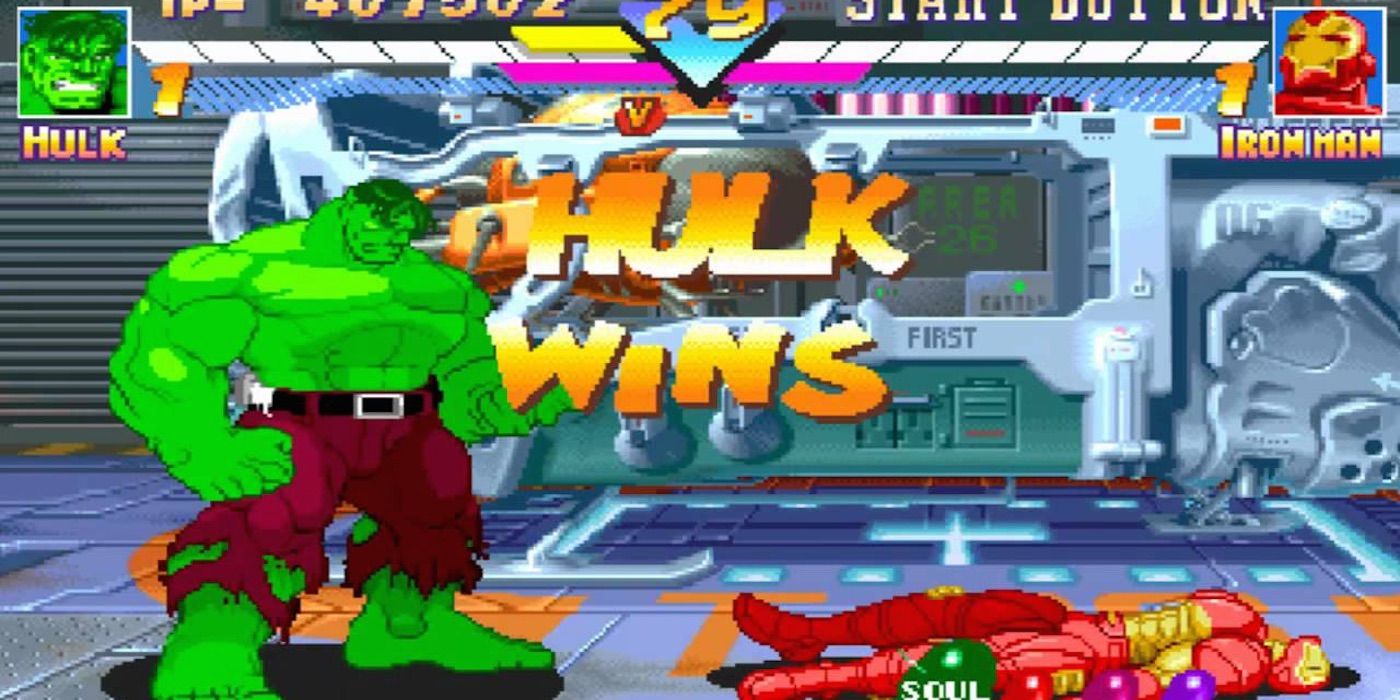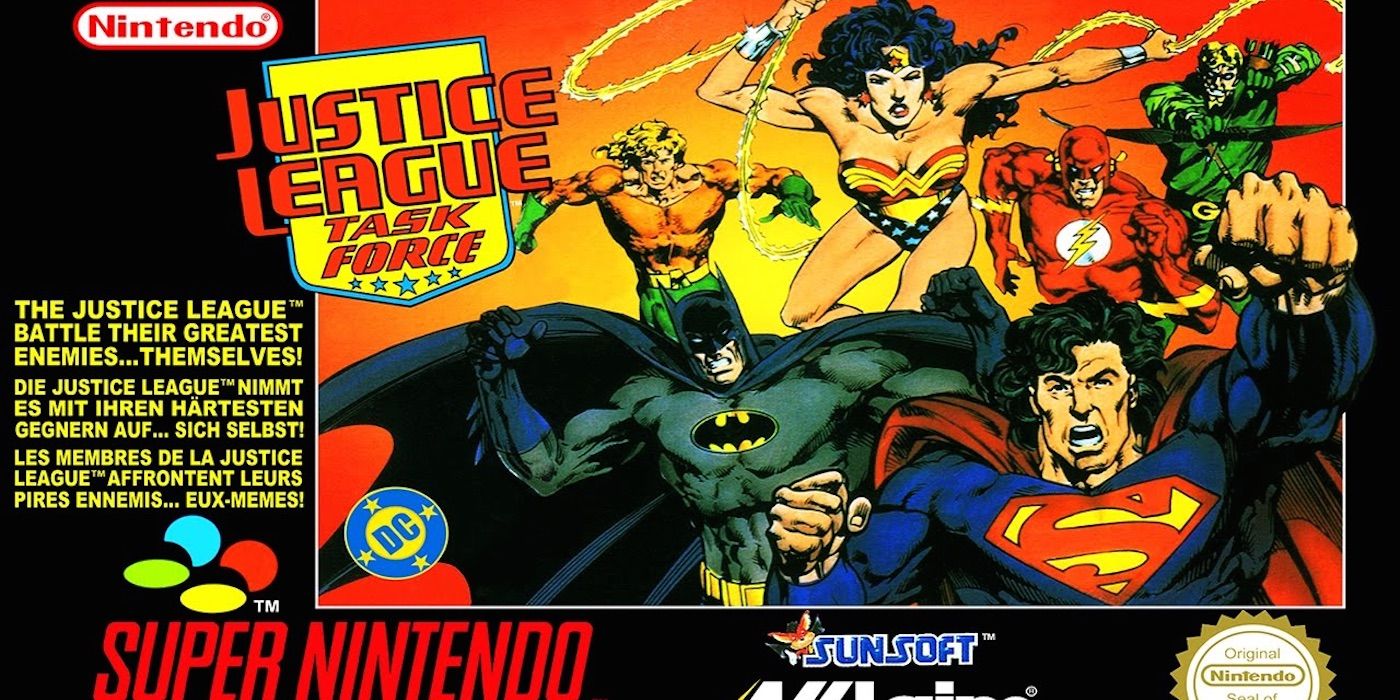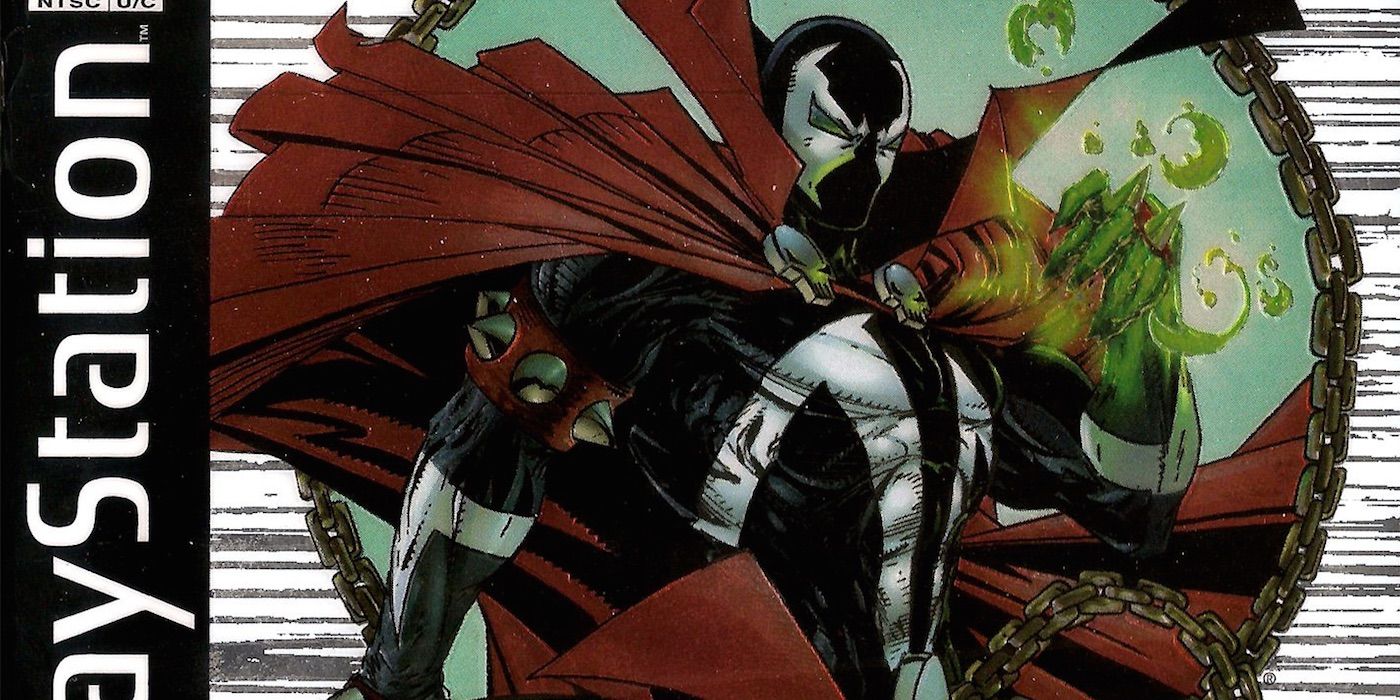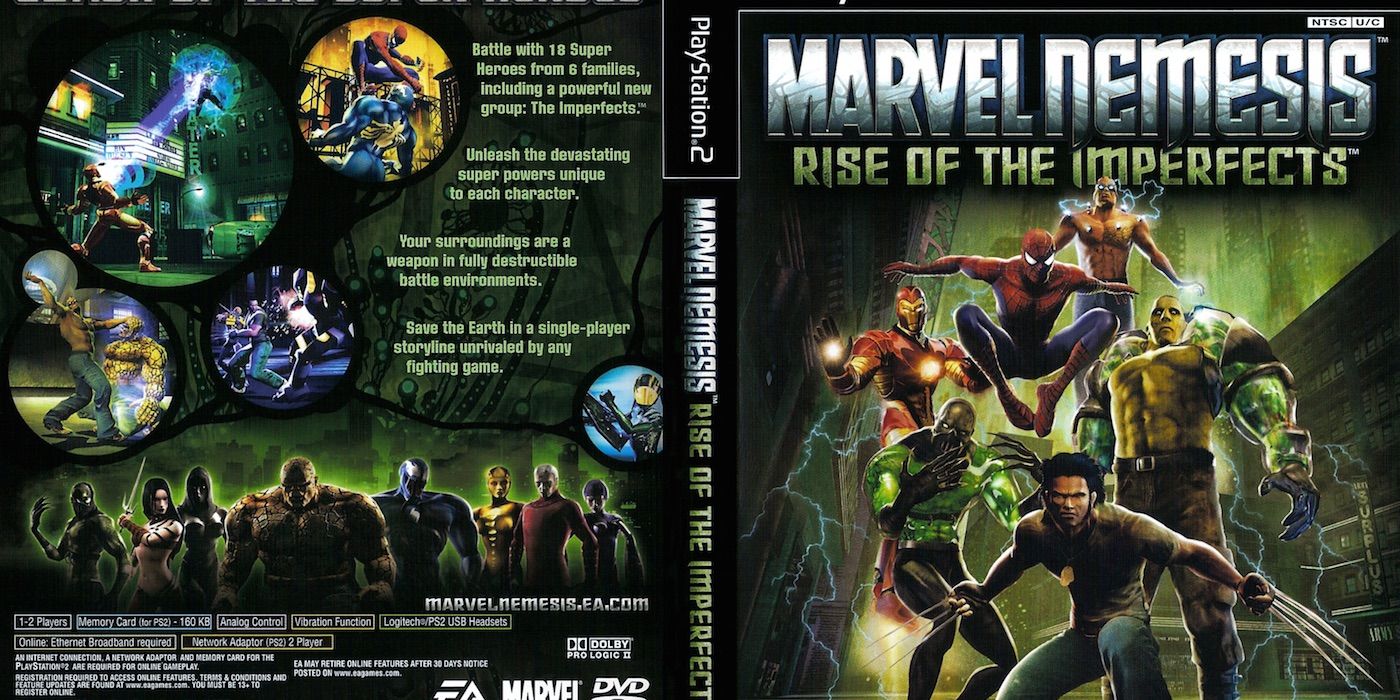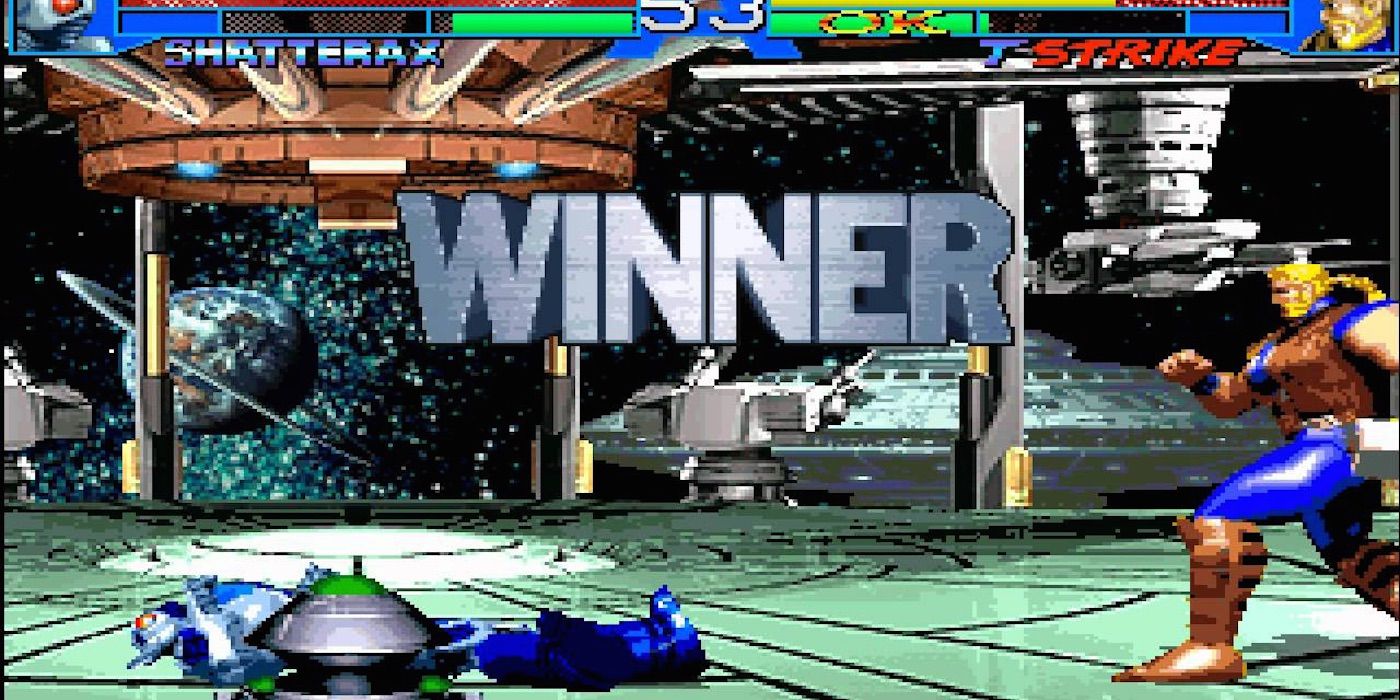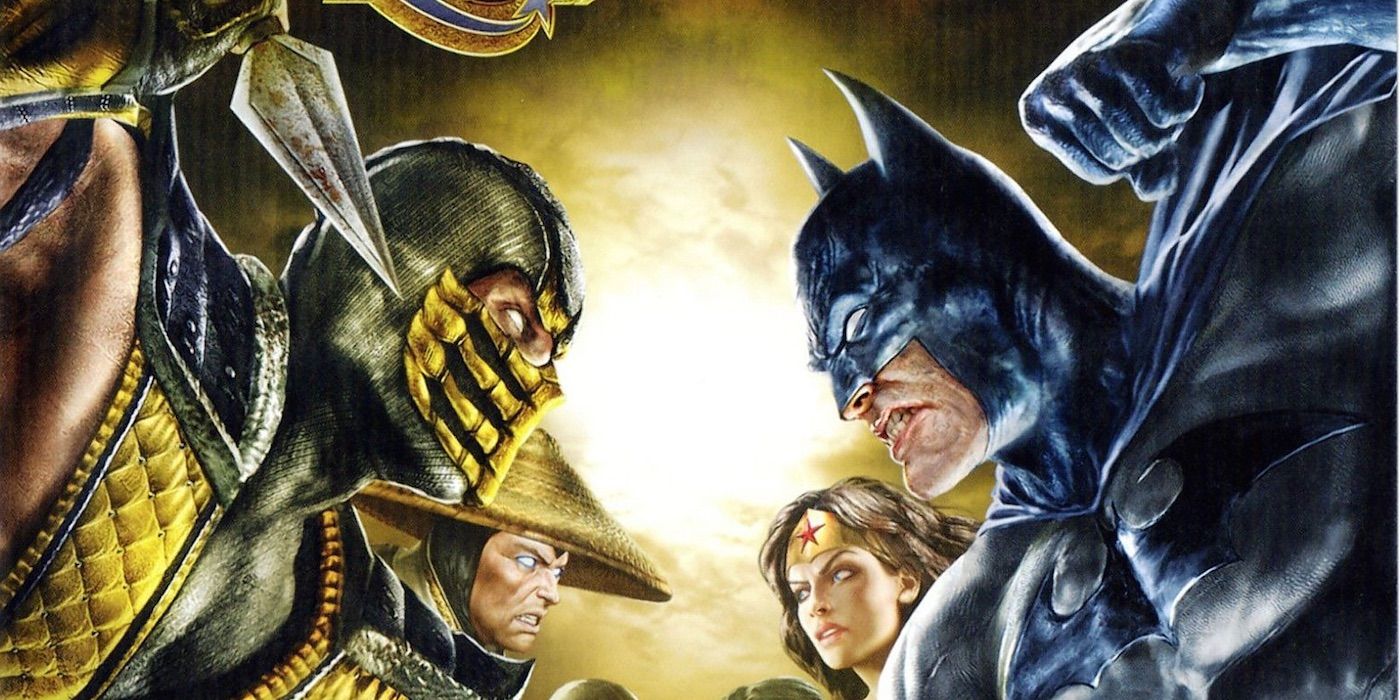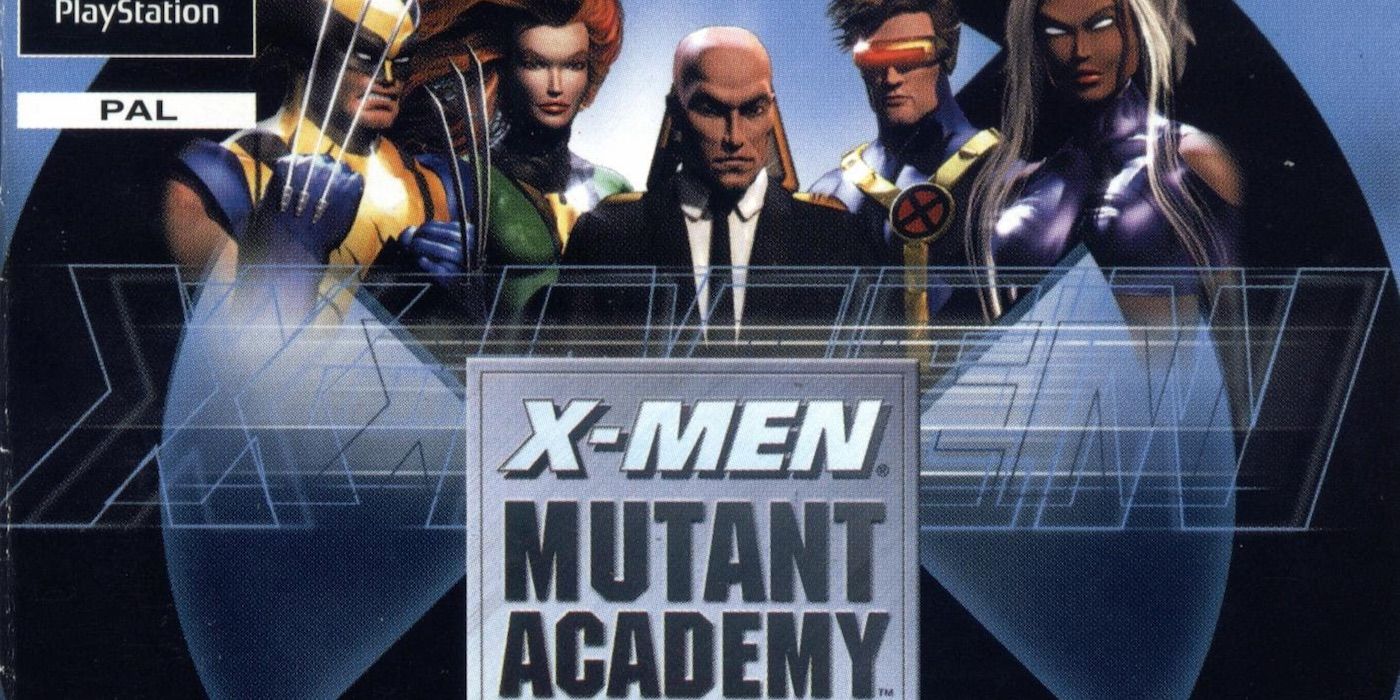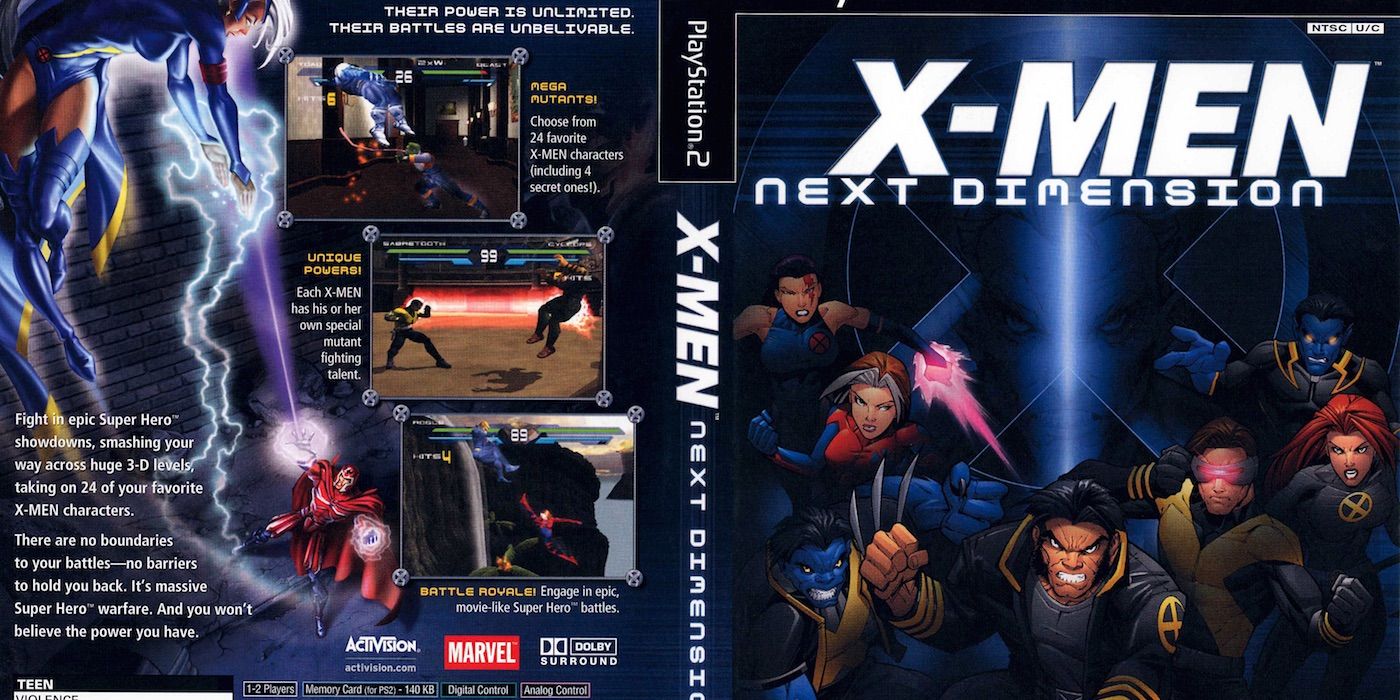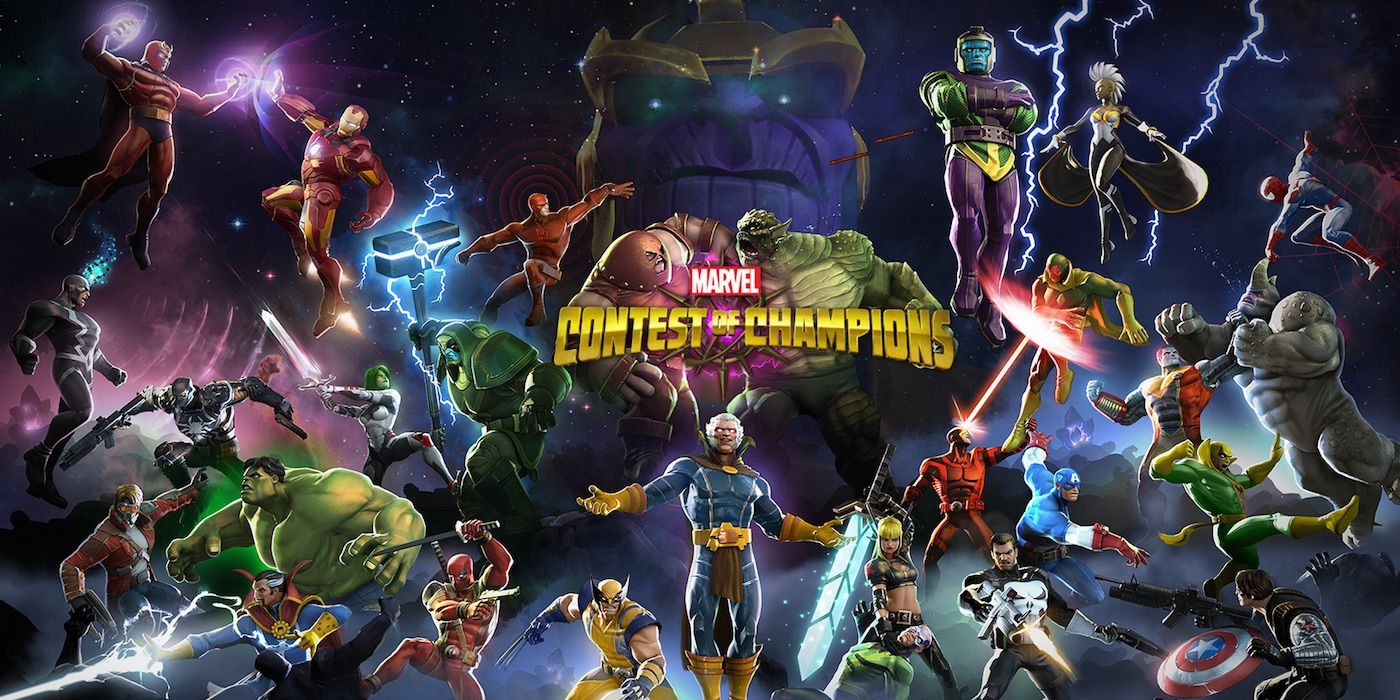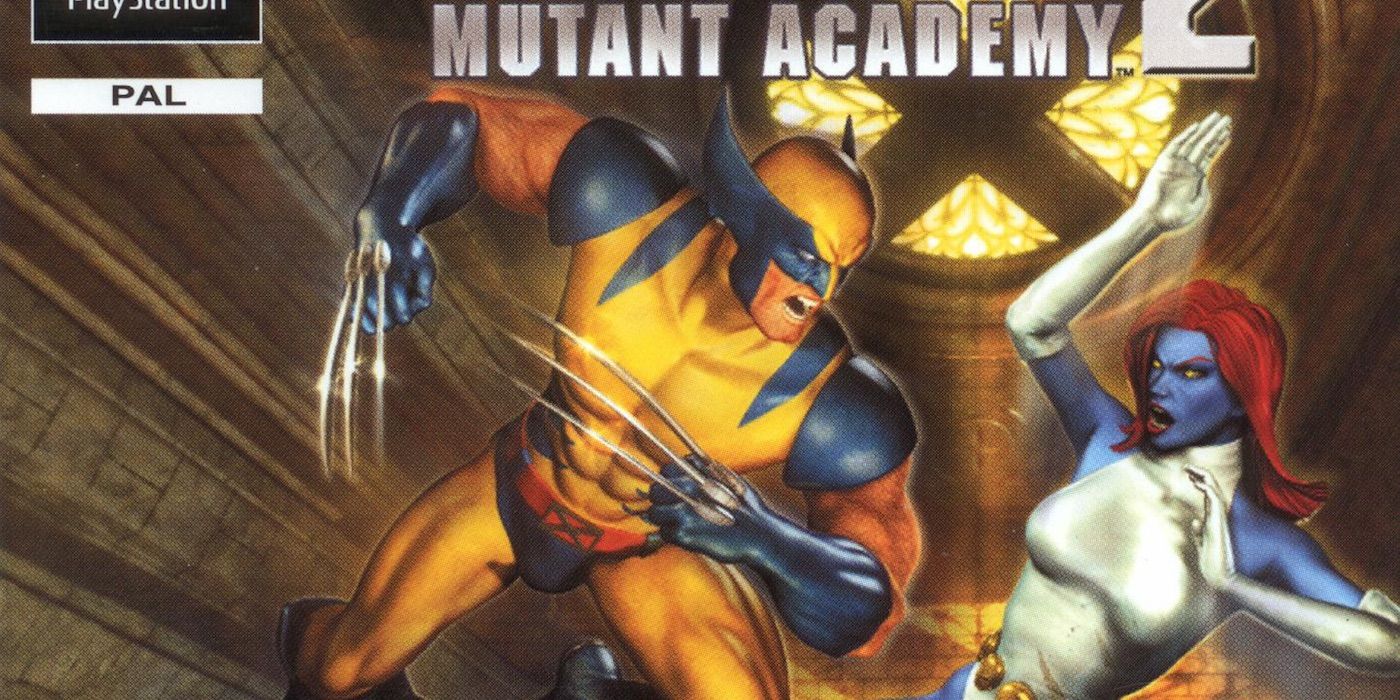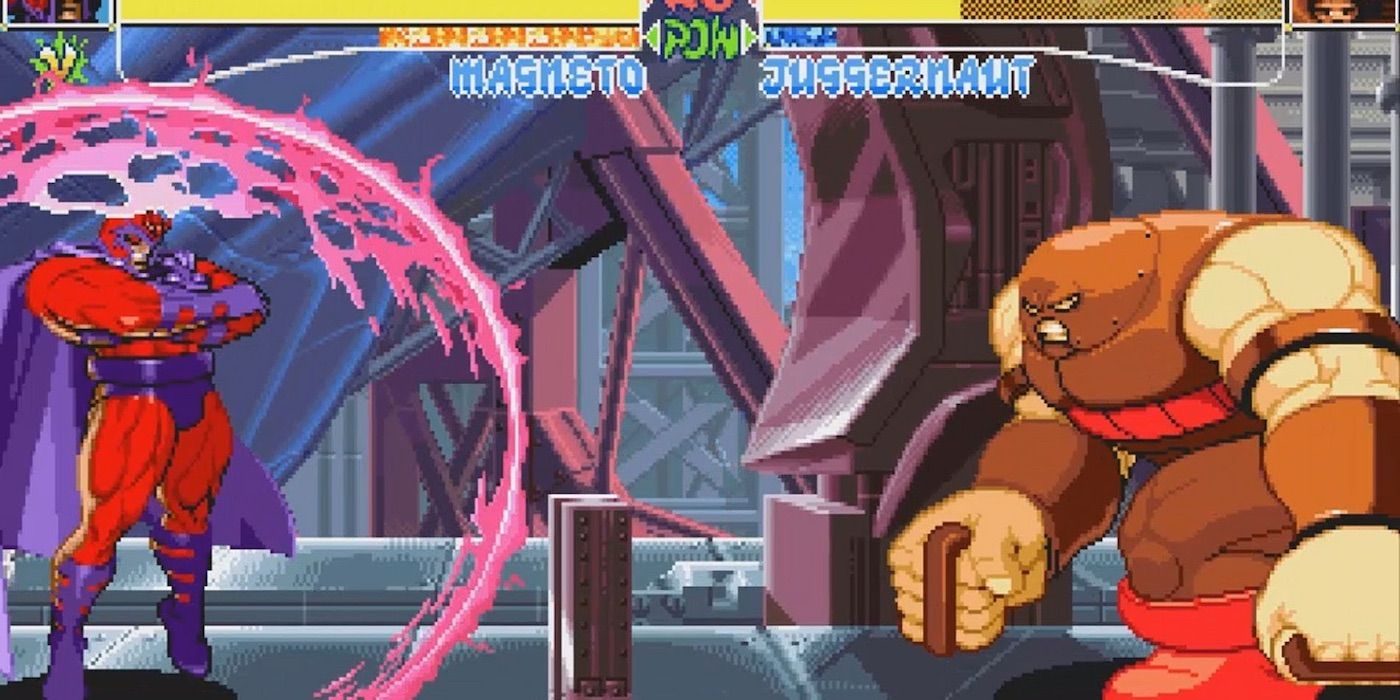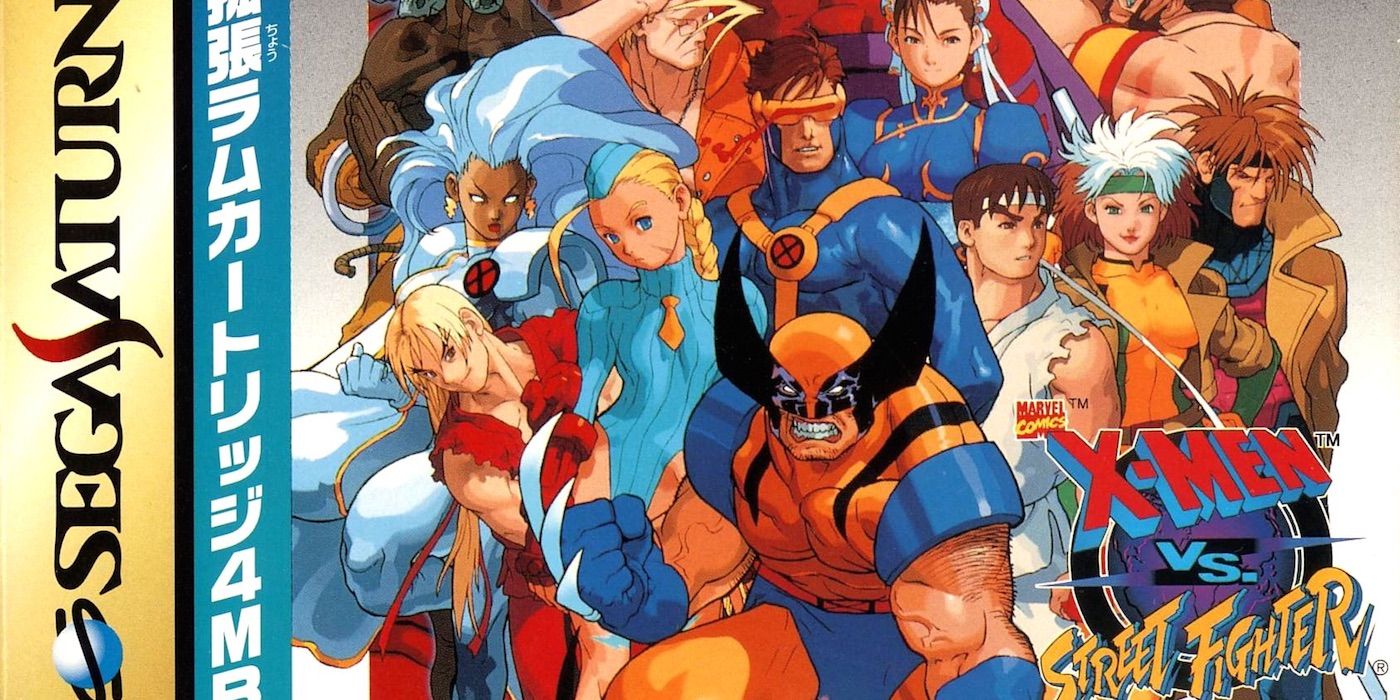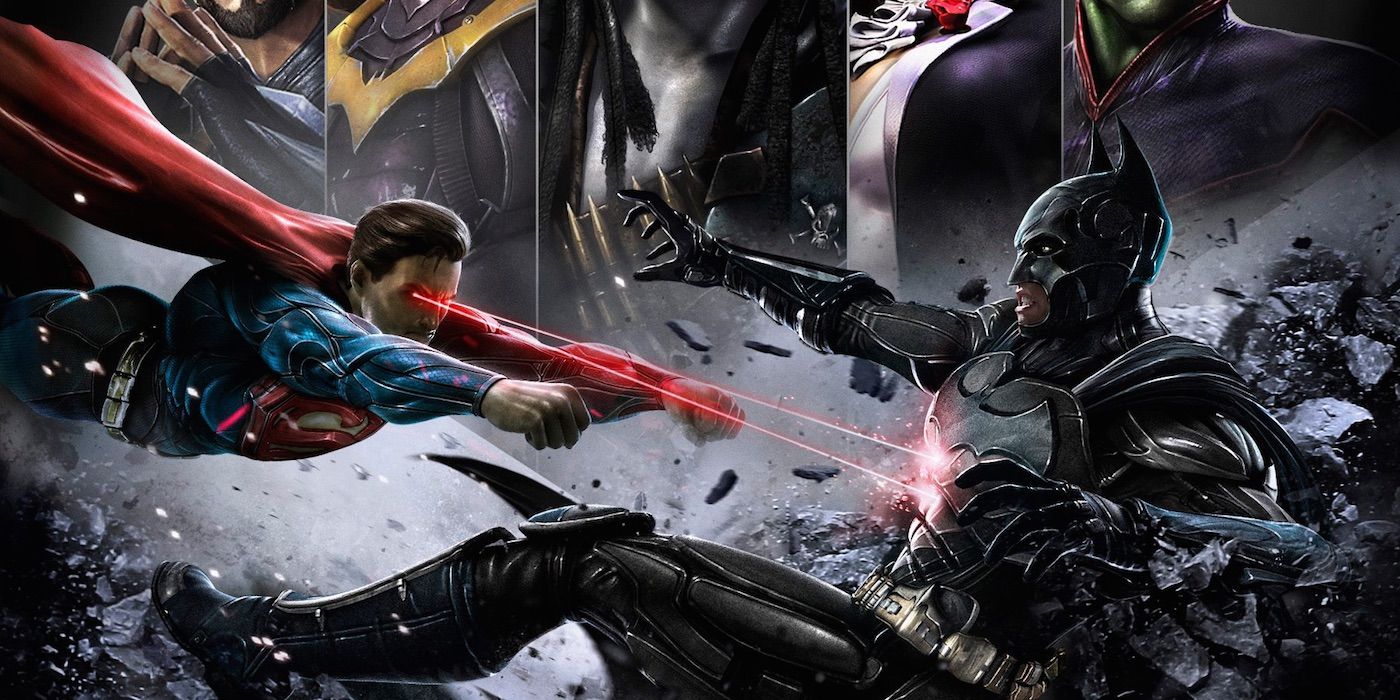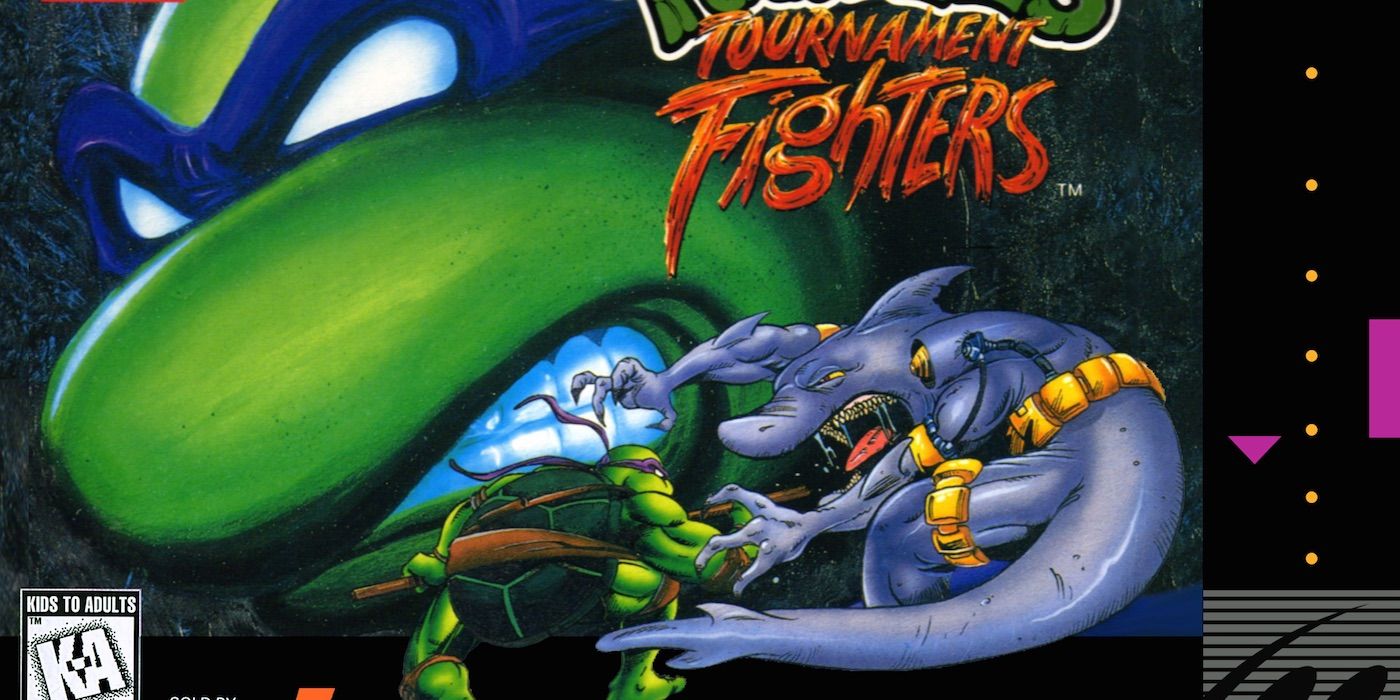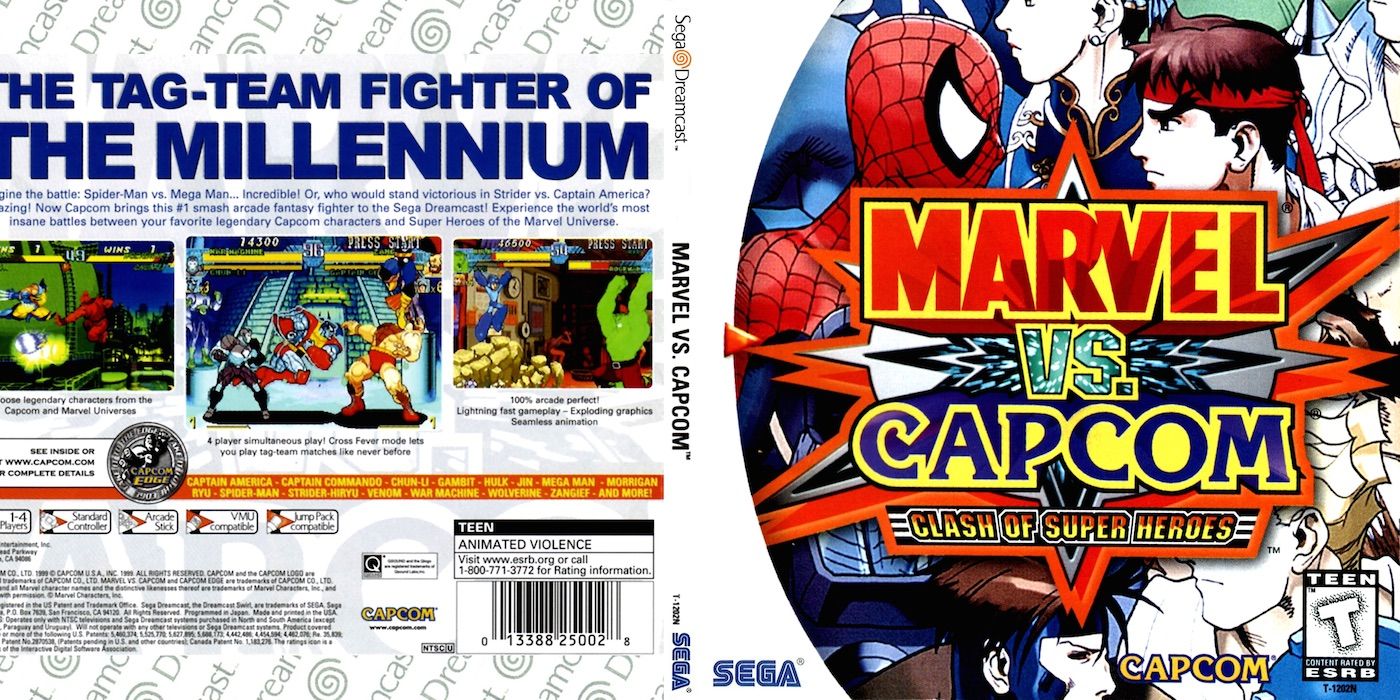When it comes to video games, comic books have had a rocky history. While there have been a lot of great games, super heroes have starred in some of the worst video games ever. This usually happens when a game takes a character and puts them in a genre that they don't really belong in, or focuses on a strange gameplay mechanic.
RELATED: The 15 Greatest Marvel Video Games Of All Time
That's why fighting games seem to have the most consistent track record when it comes to comics. Taking two (or more) characters and having them slug it out works no matter what the source material is. That being said, the fighting genre hasn't been immune to lame entries. With both Marvel and DC set to release big fighting games in 2017 ("Marvel vs Capcom: Infinity" and "Injustice 2"), it's time to take a look back at the history of comic fighting games, ranked worst to best.
15 JUSTICE LEAGUE TASK FORCE
When Darkseid attacks the Earth, the Justice League leaps into action. Unfortunately, it seems that the heroes have been replaced with android duplicates, who are, of course, evil. This was the plot for "Justice League Task Force" (1995) by Acclaim Entertainment for the Sega Genesis and Super Nintendo. The main problem with it was that instead of fighting through DC's colorful roster of villains, players spent the game fighting against other heroes, or at least robots designed to look like them.
Ever since they first appeared in "The Brave and the Bold" #28 (1960) by Gardner Fox and Mike Sekowski, the Justice League has been DC's premiere super team, and the roster in this game reflects that. The included characters are Batman, Superman, Wonder Woman, the Flash, Green Arrow, Aquaman, Cheetah, Despero and Darkseid. Aside from the lack of villains, another common complaint about the game was the clumsy controls, which made pulling off special moves extra difficult. On top of the fact that this is a superhero fighting game that barely includes any villains, "Justice League Task Force" is best left forgotten.
14 SPAWN: THE ETERNAL
As one of the most popular comics during the '90s, it wasn't surprising when Spawn became a video game star. The character, who first appeared in "Spawn" #1 (1992) by Todd McFarlane, was the star of a fairly generic Super Nintendo side scrolling beat 'em up in 1995, appropriately titled "Todd McFarlane's Spawn: The Video Game." For his next digital appearance, however, it was decided to mix things up. "Spawn: The Eternal" (1997) by Sony Computer Entertainment is an odd combination and buggy entry to the Playstation's catalogue.
"Spawn: The Eternal" finds the titular character wandering around dungeons searching for demons, and whenever he encounters an enemy, it switches to a 2D fighter. So, while it's not a traditional tournament fighting game, it's still built around that gameplay style. Reviews for the game knocked it for clumsy and unresponsive controls, buggy graphics and repetitive gameplay. It seems that if this game had just focused on being one type of game as opposed to combining exploration with 2D fighting, it might have been an ok title.
13 MARVEL NEMESIS: RISE OF THE IMPERFECTS
In 2004, Marvel Comics and Electronic Arts announced that they had formed a partnership and would begin created video games based on Marvel characters. The first (and only) game to come from this was "Marvel Nemesis: Rise of the Imperfects" (2005) for home consoles. The game pits classic characters like Spider-Man and Wolverine against the newly created Imperfects, a group of super powered people who are under the control of an evil alien who plans on invading the Earth.
One of the major complaints about the game was that, in order to unlock all of the characters, players had to trudge their way through a repetitive story mode. There, the game would switch between a beat 'em up style and fighting game styles, with neither gameplay mode offering too much in terms of variety. While not a terrible game, it never failed to rise above mediocrity, and Marvel and EA's partnership soon dissolved without producing any further games.
12 AVENGERS IN GALACTIC STORM
When the Kree and Shi'ar Empires went to war, their use of a nearby stargate threatened the Earth, leading to the 1992 crossover event "Operation: Galactic Storm." The Avengers were forced to split up into multiple teams while they defended the Earth and took the battle to the stars. This storyline was the basis for the 1995 arcade game "Avengers in Galactic Storm" by Data East. Unlike the comic book version, the arcade game featured a fairly small roster of characters.
Captain America, Crystal, Thunderstrike and Black Knight were the four main playable Avengers, with Iron Man, Giant Man, Thor and Vision appearing as assist characters, which was a fairly new concept at the time. The game featured some nice 3D graphics for its era, and a fairly elaborate story mode to go along with the traditional versus mode. It's a decent, if not all that memorable. Its biggest sin, however, is making Thunderstrike a playable instead of the much more popular Thor, who's stuck as an assist character.
11 MORTAL KOMBAT VS DC UNIVERSE
In 1992, Midway released the original "Mortal Kombat," launching one of the most successful fighting game franchises ever. The series was best known for its extreme and often cartoonish levels of blood and gore. Based on that, crossing the series over with the DC Comics universe might not seem like the best fit. Marvel, however, had made several successful games crossing over with "Street Fighter" (and later, all of Capcom), which were both DC Comics' and Mortal Kombat's biggest competitors; so, in 2008, "Mortal Kombat vs DC Universe" was released.
With a solid character selection, unique fighting mechanics (mid air battles) and a fairly decent storyline, the game was well received, but still faced criticism. For Mortal Kombat fans, it felt like a toned down entry in the franchise. The story, which saw Darkseid and Shao Kahn being merged into one being called Dark Kahn, gets credit for at least trying to explain how Batman or Liu Kang could possibly stand their own against Superman in a fist fight by describing that each character was experiencing "rage" boosts, powered by Dark Kahn.
10 X-MEN: MUTANT ACADEMY
The year 2000 was a big year for the X-Men. Their first movie, appropriately titled "X-Men" was released and proved that comic book movies could be good. Along with the movie's release came "X-Men: Mutant Academy" for the Playstation. While the game didn't feature a huge roster, it had some of the most popular X-Men (Wolverine, Gambit, Cyclops and Storm), and the major villains from the first film (Magneto, Mystique, Toad and Sabretooth).
The game received mostly 'ok' reviews. The graphics were decent for the time, but like many early Playstation games, haven't aged well. It also featured full motion video (FMV) intro and outro cutscenes for each character, but they just seem to be random footage of the character. Cyclops, for example, is shown playing basketball as the court opens up and the Blackbird begins to launch in his outro video. Gambit is shown training in the Danger Room and Wolverine gets adamantium bonded to his skeleton.
9 X-MEN: NEXT DIMENSION
Released for the Playstation 2, XBox and Gamecube in 2002, Activision's "X-Men: Next Dimension" was the third and final entry in the "Mutant Academy" series (despite not having the words "Mutant Academy" in the title). It featured the largest roster of the series, with 24 playable characters, based on the lineups and costumes from "New X-Men" and "Xtreme X-Men" comics of the period. This meant that the characters wore a lot of black leather, and Wolverine just wore an open leather jacket with no shirt underneath.
The game's fighting mechanics are based on the "Dead or Alive" engine, and featured an elaborate combo system, counterattacks and the ability to knock opponents from one stage to another. The story is based on "Operation: Zero Tolerance" (1997), a crossover that featured Bastion launching Prime Sentinels against the X-Men. For the time period, it was a fairly standard fighting game, but it didn't seem to hold any lasting appeal outside of hardcore comic book fans.
8 MARVEL: CONTEST OF CHAMPIONS
The original "Contest of Champions" was a three-issue limited series by Mark Gruenwald, John Romita Jr and Bob Layton that ran in 1982. In the story, two cosmic entities, the Grandmaster and Death, challenge each other in an attempt to either resurrect the recently deceased Collector, or force the character to remain dead. The concept has been returned to a few times over the years, and it always features large rosters of heroes being forced into fighting one another. So, when Marvel decided to release a mobile game based on its characters, it was of course called "Marvel: Contest of Champions."
Developed by Kabam, players start off with a small roster of characters, and through fighting and other challenges, the goal is to gain more characters and level them up. Being a mobile based game, the controls are relatively simple, with the challenge coming from chaining combos together. As a mobile game, it's pretty good, although it still suffers from the limitations of the platform (the games needs an internet connection just to be played and no controller can be added).
7 MARVEL SUPER HEROES
Based loosely on the "Infinity Gauntlet" storyline, Capcom's "Marvel Super Heroes" (1995) features the heroes and villains of the Marvel Universe fighting for control of the Infinity Gems. The game was a big arcade hit before being released on the Playstation and Sega Saturn consoles. While many games during this time period were attempting to use 3d polygon based graphics, "Marvel Super Heroes" used 2D animation, similar to Capcom's "Street Fighter" series. This choice was highly praised by critics at the time, since the result was an incredibly smooth looking game.
This game was Capcom's second entry in the Marvel fighting game series, following the popular "X-Men: Children of the Atom" (1994). The fast paced and chaotic gameplay was well received, and it would become a staple in what would ultimately become the "Marvel vs Capcom" series. The only flaw, and this is really more of a nitpick, is that Capcom decided to include several X-Men characters in the game, who already had their own fighting series at the time.
6 X-MEN: MUTANT ACADEMY 2
As one of the later releases on the original Playstation, "X-Men: Mutant Academy 2" (2001) found itself somewhat lost under the glare of the newly released Playstation 2. That's a shame, because this sequel essentially just took the original game and improved upon it, creating a pretty solid fighting game. The roster was expanded, creating a wider variety in fighting styles between characters. Also, the addition of aerial combat was widely praised by critics at the time.
While the game does have its flaws, being a later addition to the Playstation catalogue means that the developers were able to fully take advantage of the system's capabilities. Unfortunately, it was released just as consumers were getting used to the next generation of graphics, making it this game look dated almost immediately. Still, "Mutant Academy 2" is arguably the best entry in the "Mutant Academy" series (including "Next Dimension"), and it gets bonus points for including Spider-Man as a surprise unlockable character.
5 X-MEN: CHILDREN OF THE ATOM
During the mid '90s, the X-Men were at the height of the popularity. They were the stars of a highly praised and successful cartoon, and their comic book sales were through the roof. Capcom decided to cash in on this success with the release of "X-Men: Children of the Atom," which first appeared in arcades in late 1994, before coming to the Sega Saturn and the Playstation in 1998. The game played like it was an entry in the mega popular "Street Fighter 2" series, which would ultimately lead to "X-Men vs Street Fighter" in 1996.
Along with the previously mentioned "Marvel Super Heroes," this classic fighter would ultimately be overshadowed by the mega successful crossover franchise it helped launch, "Marvel vs Capcom." And yet, it remains a great game in its own right. Also, being based on the "Fatal Attractions" crossover from 1993, the roster is made up most of the franchise's most popular characters, all wearing their classic Jim Lee inspired uniforms.
4 X-MEN VS STREET FIGHTER
Based on the success of both "X-Men: Children of the Atom" (1994) and "Marvel Super Heroes" (1995) in the arcades, Capcom decided to add one of its biggest franchises to the mix and released "X-Men vs Street Fighter" in 1996. This made sense, considering that Marvel games were built to play just like the Street Fighter games. In this game, however, instead of picking one character and fighting another single character for several rounds, players would choose two different characters. Each character has their own life bar, and the rounds continue until one player loses full life on both of their fighters.
The game was a huge hit, and eventually spawned a sequel, "Marvel Heroes vs Street Fighter" in 1997, which added a wider variety of characters from the entire Marvel Universe to the roster and added the "assist" move to the fights, where a player could call in their second, off-screen fighter for a brief special move. Toybiz released a line of "X-Men vs Street Fighter" action figures two-packs that paired up one of the mutants with a Street Fighter character.
3 INJUSTICE: GODS AMONG US
After the awkward "Mortal Kombat vs DC Universe" (2008), Warner Brothers Interactive decided to try a DC Comics based fighting game again with 2013's "Injustice: Gods Among Us" for the PS3, PS4, Wii U, XBox 360 and Xbox One. Warner Brothers hired Netherrealm Studios to develop the game, based on the studio's recent success with 2011's "Mortal Kombat." The result was a much superior game, which was praised by critics for both its gameplay and storyline.
Based in an alternate world where the Joker tricked Superman into killing Lois Lane and nuking Metropolis, many of the heroes have turned to Superman's paranoid brand of totalitarianism. Batman, one of the few good guys left, brings the classic DC heroes to his universe to take down the evil Superman's regime. The game also features Kevin Conroy and George Newbern returning to voice Batman and Superman, just like they did in "Justice League" and "Justice League Unlimited." The game also inspired a popular comic book tie-in series, and a sequel is expected in 2017.
2 TOURNAMENT FIGHTERS
When fighting games started becoming popular during the same time period, Konami decided to throw the popular Ninja Turtles into the mix and released "Teenage Mutant Ninja Turtles: Tournament Fighters" in 1993. The game was noteworthy for being released not just for the SNES and Sega Genesis, but also for the NES. Also, each version of the game features a unique roster of characters and storyline. While the four turtles remain constant, characters like Shredder, Casey Jones and April O'Neil are sometimes playable depending on the system, along with several monsters based on characters from the comics and toy line.
The SNES version has the Turtles entering a tournament to stop Shredder from winning it, while the Sega version has them fighting to save Splinter from Kang. In the NES version, they're simply fighting after being challenged by Shredder. The game, at least on the SNES and Sega, played very similar to other popular fighting games at the time. Obviously, the NES version had to make sacrifices due to the system's limited hardware.
1 MARVEL VS CAPCOM
After pitting their Street Fighter characters against the X-Men, and then the rest of the Marvel Universe, Capcom decided to bring in the entire roster for "Marvel vs Capcom: Clash of the Super Heroes" in 1998. Characters like Strider Hiryu, Captain Commando and Mega Man were added to the roster, with Venom and War Machine being added to the Marvel side. There were also support characters added to the game, who were not playable, but able to assist the player during a match.
By adding a wider variety of characters, like Mega Man or Arthur from "Ghosts 'n Goblins" (1985), the game took on a more absurd tone, which led to it being a much more fun game. Capcom created a fast paced, and sometimes chaotic game, which often featured over-the-top action and moves, which is also incredibly fun to play. While it might not be the most technically intricate fighting game, it's still a blast to play, which is why sequels continued to be released, with "Marvel vs Capcom: Infinity" expected in 2017.
What was your favorite comic book fighting game? Let us know in the comments!
Injustice 2 is set to be released for the Playstation 4 and X Box One on May 16, 2017.

